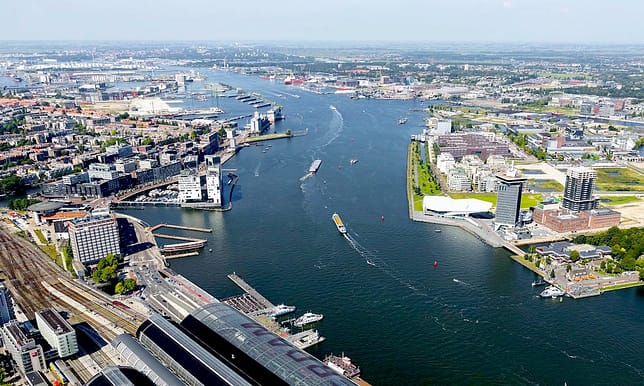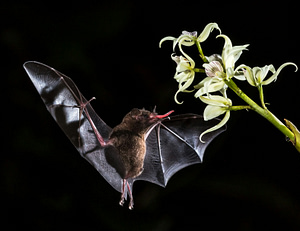It’s been an eventful year for circular economy practitioners and we’re pleased to have played a part in some of the fundamental developments taking place. From food to festivals, and cities to chemicals, we’ve worked with some great partners on really exciting pieces of work, reinforcing opportunities for various sectors and the roles they play in creating new, sustainable approaches. You may have missed something… So, here’s a look back on 2017, and a roundup of some of the top articles we’ve shared on our work.
Metabolic past and future
2017 was a big year for us as we turned 5 this summer. We celebrated with events at our second home De Ceuvel, which also celebrated its third birthday. We looked back on what we have achieved in the past five years and set out some plans for the years ahead. And it was a great opportunity to bring some of our 150-strong alumni community together. Consistent in our growth has been our core values – and we hope to encourage others to bring values to life in their work. And this year, as a result of our work, we were pleased to be named one of the leading sustainability pioneers in Amsterdam’s DAM Prijs. Once again this year, Eva was also named among the list of top sustainability influencers in the Netherlands.
- Metabolic 2022: celebrating five years and sharing plans for the future
- Over the years: lessons from Metabolic’s R&D
- Why Metabolics alumni community is a powerful tool for change
- Values drive success – here’s how to bring them to life
- Eva Gladek named as one of top sustainability leaders
Educating on the Circular Economy
We started 2017 with the release of our founder Eva Gladek’s Seven Pillars of the Circular Economy, which has been shared widely by thought-leaders in the field. If you haven’t yet read it, it’s an indispensable tool for those wanting a better grasp on the circular economy. We’ve been been busy bringing the ideas to life in a new educational animated video – looking forward to sharing it with you soon.
We also launched a range of new educational Masterclasses and announced a new circular economy summer school partnership with UvA that will look specifically at cities. We’ll be actively involved in the Dutch Circular Economy Week in January and hosting masterclasses then on cities and food. And in case you missed it, we hosted two events at the annual Disruptive Innovation Festival to inform a wider audience on circular cities and on how the circular economy needs a data revolution.
- Metabolic and University of Amsterdam (UvA) launched circular cities summer school
- Metabolic masterclasses in Circular Economy Week
To get our messages out there, we have been working with or speaking at events in a number of countries. In 2017 this has included: Argentina, Brazil, USA, Taiwan, Finland, Poland, Italy, Belgium, Estonia and the UK.

De Ceuvel
Of course, a lot of people also come to us. The cleantec playground De Ceuvel continues to grow in influence and appeal, this year hosting 130 tours and around 80,000 visitors – all keen to see the circular economy in action. A major new innovation was the development of a blockchain-based energy sharing token called the Jouliette, developed by our spinoff energy company Spectral, with Alliander. (Expect to hear a lot more from Spectral in the new year – they’re working on a range of high profile projects and busily expanding their team). The Jouliette is gaining interest across the world. And it was a chance for us at Metabolic to reflect on the opportunities alternative currencies may provide.
- Blockchain-based renewable energy sharing token launches at De Ceuvel
- How alternative currencies can enable a circular economy
Cities
Our work on circular cities started with De Ceuvel and is now taking us to a number of countries around the world. You’ve heard it before: cities represent just 3% of the Earth’s surface but house more than half of the world’s population, consume over 75% of the global resources, and are responsible for up to 80% of greenhouse gas emissions. The circular economy can address these challenges by building a model that combines thriving economic development with ambitious sustainability goals. We’re very excited to be launching a Cities Program in 2018 that will work towards this. In the meantime, a few thought pieces we’ve been chewing on:
- Why Cities and Regions Hold the Key to Accelerating the Circular Economy
- Tacking Beijing’s Freight Challenges through Systems Thinking
- Nature-based Solutions: The New (Green) Kid on the Block

Built environment
The built environment is one of our most resource-intensive sectors, responsible for an estimated 60% of material use and 45% energy use globally. This makes it a critical leverage point for a circular economy, and we’ve identified various points at which to intervene in the system, starting right from the early stages of procurement, as well as the potential to ‘mine’ materials for new builds from demolition sites. We’re looking forward to many more projects in both of these spheres in 2018, some of which are already underway, as well as to sharing news of the range of projects we’re working on now with developers and housing corporations:
- New Tendering Tools Driving Circularity in Building Construction
- Mining the Mineral Potential of Amsterdam
Chemicals
As the world starts to transition away from fossil fuels, many sectors are looking to biobased materials as an alternative source of carbon for manufacturing. The challenge with this is that this biomass needs to be produced somewhere, and 38% of the earth’s surface is already used for agriculture, with major increases required to meet growing food demands. In the near future, competition between food crops and land for biofuels will only increase further, making traditionally produced biomass an unsustainable feedstock. In response to this, we’ve been grappling with this challenge through the lens of the chemicals industry. Our recent landmark report with leading industry partners looks at using recycling waste gas from industry as a carbon source for chemical manufacturing:
2018 brings with it a whole new set of developments for Metabolic and the chemicals sector, as we launch the Future Chemicals Consortium, which aims to build a sustainable carbon cycle, and ChemDSS, a decision support system we’ve developed with our partners at Sustainability AtoZ that allows chemical product designers to easily assess and optimise the toxicity and environmental impacts of their products.
Textiles
The textiles sector contributes to 20% of the world’s industrial water pollution, and 80% of textiles end up in landfill or are incinerated rather than recycled. Plenty of room for circularity, but how? We’ve looked at various angles, one focused specifically on the environmental impact of hotel linen, as well as a broader look at sustainability in the fashion sector. And we were pleased to sign a partnership with Fashion for Good to help shift the sector to circularity.
- Improving the Environmental Performance of Hotel Linen
- Circular Clothing: The Next Step in Sustainable Fashion
Food
With the global food system playing such an overwhelming role in many of our sustainability challenges, we’ve looked at various aspects of agricultural and food systems, from consumer behaviour to the Sustainable Development Goals with systems thinking playing a pivotal role:
- 10 Ways to Shift Consumers towards Sustainable Diets
- Ending Hunger: As the SDG’s Turn Two, how can we Realise One of its Biggest Challenges
- Changing the food system through impact ventures
One Planet Thinking
A lot of our food work builds on a major study of the global food system we conducted with WWF. We were pleased to build on this relationship by launching a major report on how to create sustainability approaches in line with the planet’s limits, with WWF, IUCN and the Swiss Government (FOEN). This news story is getting picked up around the world and is already leading to exciting new projects we are now busy on.
Festivals and Islands
Festivals and islands are both perfect playgrounds to test out new approaches to the circular economy. Islands are unique in that they allow us to experiment with circular interventions on a small, self-contained scale, and festivals are ‘hotbeds’ for resource consumption, providing enormous potential for turning waste into resources. We’ve been helping festivals and islands in the Netherlands to become more circular and these articles list some of the key learnings we’ll be taking forward into 2018:
- Designing Out Waste: Five Guidelines for a Circular Festival
- Islands as living labs for circular economics
Metabolic Foundation
Our Foundation is helping people to build community resilience from the bottom up, by connecting people with information and each other. It works to actively strengthens the sustainability of communities through education, tools, and clean technology. And it shares its approaches and lessons so that others can implement them. Read how they set up a plastic recycling facility and you can too.
- How to set up your own plastic recycling plant
- Empowerment: why we must inspire, educate and resource a new generation of changemakers
That should all keep you busy reading while we take our festive break. But, remember, if you need a book to keep you entertained, check out our list of top sustainability books (and if you have suggestions for how we should build this list, let us know!).
See you all in 2018!
To keep informed of all our work through 2018, be sure to sign up to our newsletter and join us on Twitter, Facebook and LinkedIn.








